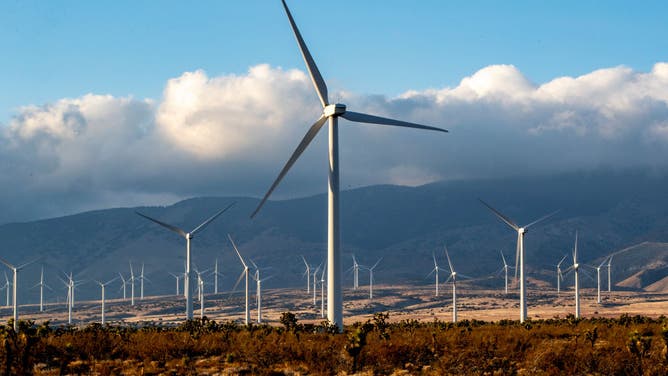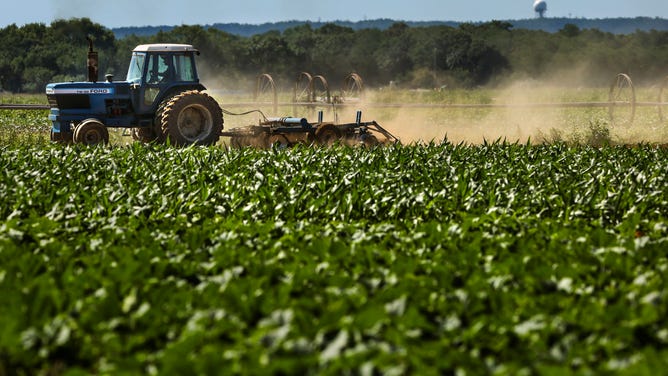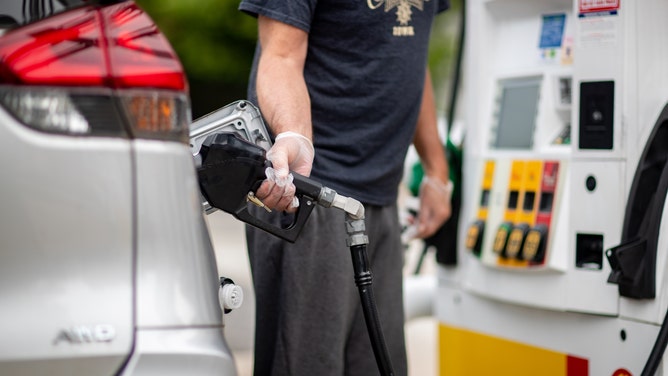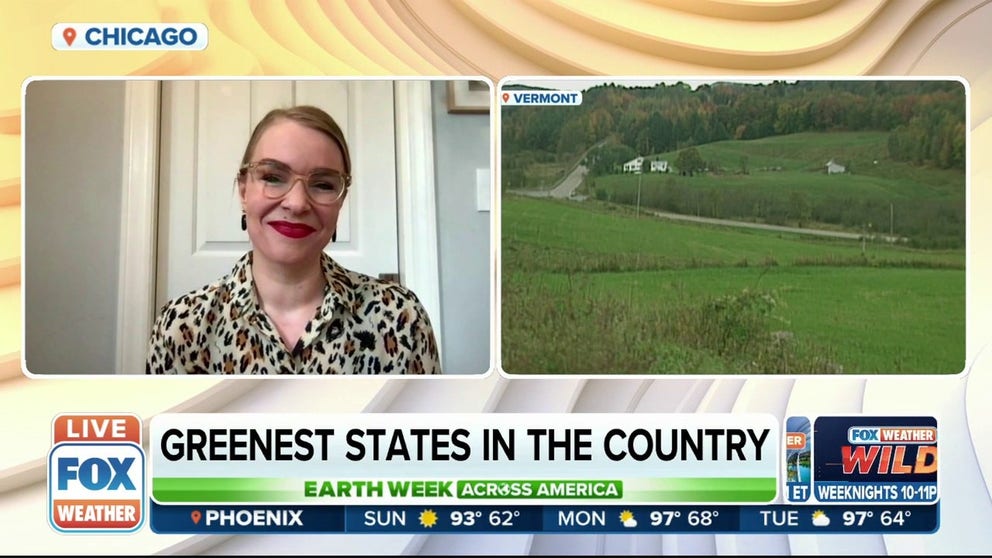Here are the 7 greenest and least-green states in the US
How does your state rank?
Study reveals greenest states in the country
Sustainability expert Ashlee Piper joins FOX Weather for Earth Week to talk about the states that were rated the most eco-friendly.
What is the greenest state in the U.S.? A study found Vermont was the 2022's greenest after ranking all 50 states from the greenest to the least green. WalletHub, a personal finance website compared the states’ environmental quality, eco-friendly behaviors and climate-change contributions (greenhouse gas emissions).
Greenest states:
- Vermont
- New York
- Hawaii
- Maryland
- California
- Massachusetts
- Minnesota
"Eco-friendliness and personal finance are related," stated the Managing Editor of WalletHub in the report, explaining that every person, through spending choices as an impact on the environment. "We spend money through our own consumption and taxes in support of environmental security."

Wind farm in California.
(Gina Ferazzi / Los Angeles Times via Getty Images / Getty Images)
Vermont:
Vermont ranked #1 for eco-friendly behaviors like certified organic farms per capita (this was weighted double other considerations), LEED-certified (green) buildings per capita, alternative fuel vehicles per capita and average commute time by car.
The study ranked the Green Mountain State #2 for environmental quality. This measured air, water and soil quality along with energy efficiency.
New York:
New York ranked #3 for environmental quality and top 10 in both eco-friendly behaviors and lowest climate change contributions. WalletHub measured carbon dioxide, methane, nitrous oxide and fluorinated greenhouse emissions per capita to measure climate change contributions.

(John Paraskevas/Newsday RM via Getty Images / Getty Images)
The Empire State tied for fifth for highest soil quality, third for the lowest energy consumption per capita and the state with the lowest gasoline consumption per capita.
Hawaii:
Hawaii topped the list for environmental quality. It tied for second for air quality, tied for first for water quality and soil quality and came in second for lowest gasoline consumption per capita.
Maryland:
Maryland scored top 10 in all three metrics. It tied for top water quality and came in second for most LEED-certified buildings per capita.
California:
The Golden State came in #3 for eco-friendly behaviors. California tied for highest water quality but came in last for air quality. It ranks second for lowest energy consumption per capita.

(Citizen of the Planet/Education Images/Universal Images Group via Getty Images)
Massachusetts:
Massachusetts tied for first for highest water quality, came in third for green buildings per capita and topped the list for fewest climate change contributions.
Minnesota:
Minnesota tied for first for soil quality.
"There are quite a few states on there that are actually doing pretty well. And then there are some states on there that have some room for improvement," Ashlee Piper, sustainability expert told FOX Weather on Sunday. "I would just stress this is one particular study... So if your state's not necessarily on there, I wouldn't say that there is not plenty of room for improvement for everyone."
What states came out on the bottom of the study?
Least green states:
- West Virginia
- Louisiana
- Mississippi
- Alabama
- North Dakota
- Kentucky
- Wyoming
There were some surprises said Piper which has more to do with how the scores were tabulated.
"A state, for instance, like North Dakota, which has really pristine air quality, actually ranks surprisingly high on the list [for air quality]," said Piper. "Though it doesn't have a significantly large population and it doesn't have things like bike lanes or large cities whereby people are having a few more options to navigate on foot."
West Virginia topped the states for climate change contributions and came in #48 for both environmental quality and eco-friendly behaviors. It tied for last in water quality and was last in green buildings per capita.

( Marius Becker/picture alliance via Getty Images / Getty Images)
Louisiana was last for eco-friendly behaviors and top three for climate change contributions. The Pelican State came in 49th for green buildings and had the lowest percent of renewable energy consumption. It was tied for highest energy consumption.
Mississippi scored last in environmental quality, 49th in eco-friendly behaviors, tied for last in water quality and topped the list of gasoline consumption per capita.
Alabama was the second-highest gas consumer per capita and 46th worst in green buildings.
North Dakota was in the middle of the pack for environmental quality and eco-friendly behaviors. It even scored fourth for air quality. But, the state had the third-highest gas consumption per capita and tied for highest energy consumption per capita.

(Raychel Brightman/Newsday RM via Getty Images / Getty Images)
Kentucky scored in the last five for both eco-friendly behaviors and climate change contributions. But, it did tie for first in water quality.
Wyoming had the best air quality but lost points for coming in the top four for gas consumption, tied for highest energy consumption per capita and came in 48th for soil quality.
How can states improve their overall score?
"I think the largest thing that states can adopt policy-wise is really diversifying their energy portfolio to move toward decarbonization and less reliance on these kinds of usual suspect fossil fuels," said Piper. "… So meaningful investments in renewable and clean energy infrastructure and jobs, transition from fossil fuel kind of traditional jobs in a meaningful and supportive way to these more renewable resources."
